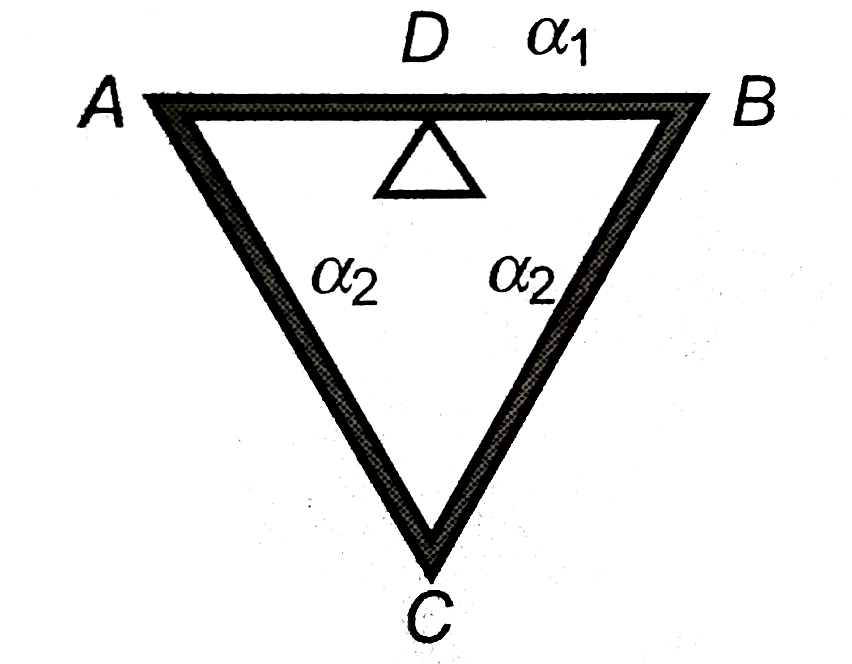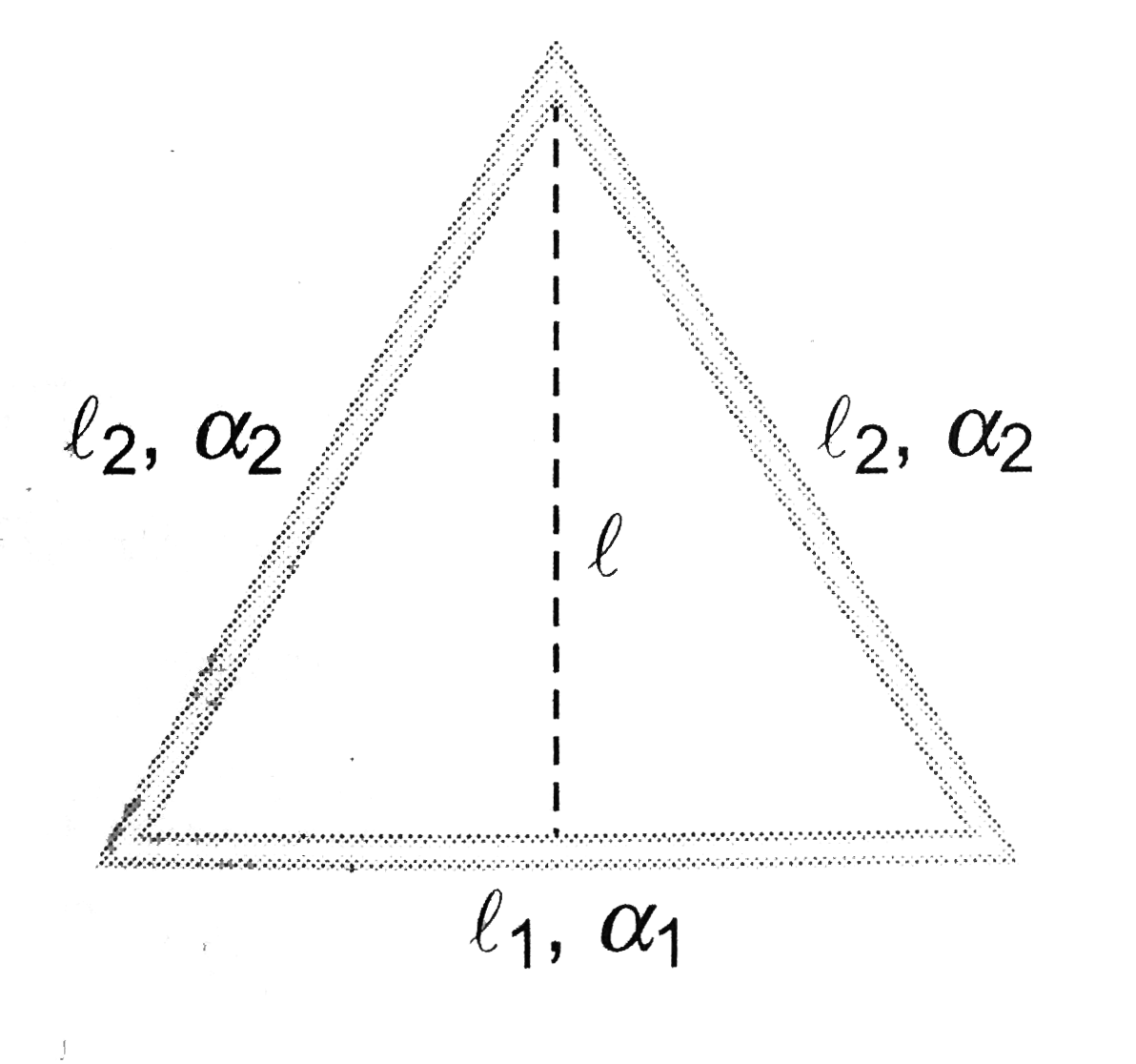An equilateral triangle ABC is formed by joining three rods of equal length and D is the mid-point of AB. The coefficient of linear expansion for AB is α1 and for AC and BC is α2. The relation between α1 and α2, if distance DC remains constant for small changes in temperature is
_E01_117_Q01.png)
α2=3α1
α2=4α1
α1=3α2
α1=4α2
The correct Answer is:D
Step by step video, text & image solution for An equilateral triangle ABC is formed by joining three rods of equal length and D is the mid-point of AB. The coefficient of linear expansion for AB is alpha_(1) and for AC and BC is alpha_(2). The relation between alpha_(1) and alpha_(2), if distance DC remains constant for small changes in temperature is by Physics experts to help you in doubts & scoring excellent marks in Class 11 exams.
Topper's Solved these Questions
- BOOK - ERRORLESS CHAPTER - THERMOMETRY, THERMAL EXPANSION AND CALORIMETRY EXERCISE - Graphical Questions14videos
THERMOMETRY, THERMAL EXPANSION AND CALORIMETRY
- BOOK - ERRORLESS CHAPTER - THERMOMETRY, THERMAL EXPANSION AND CALORIMETRY EXERCISE - Assertion & Reason14videos
THERMOMETRY, THERMAL EXPANSION AND CALORIMETRY
- BOOK - ERRORLESS CHAPTER - THERMOMETRY, THERMAL EXPANSION AND CALORIMETRY EXERCISE - Calorimetery82videos
THERMOMETRY, THERMAL EXPANSION AND CALORIMETRY
- BOOK - ERRORLESS CHAPTER - THERMODYNAMICSEXERCISE - All Questions304videos
THERMODYNAMICS
- BOOK - ERRORLESS CHAPTER - TRANSMISSION OF HEATEXERCISE - ET Self Evaluation Test23videos
TRANSMISSION OF HEAT
Similar Questions
" The relation between coefficient of linear expansion "(alpha_(1))" and coefficient of volume expansion ( "alpha_(5)" ) is "
View SolutionTwo rods of lengths l1andl2 are made of materials having coefficients of linear expansion α1andα2 respectively. What could be the relation between above values, if the difference in the lengths of the two rods does not depends on temperature variation?
View Solution
Knowledge Check
- Question 1 - Select One
Three rods of equal of length are joined to from an equilateral triangle ABC. D is the midpoint of AB. The coefficient of linear expansion is α1 for AB and α2 for AC and BC . If the distance DC remains constant for small changes in temperature,
 Aα1=α2Bα1=2α2Cα1=4α2Dα1=1/2α2
Aα1=α2Bα1=2α2Cα1=4α2Dα1=1/2α2 - Question 2 - Select One
Two rods , one of aluminium and the other made of steel, having initial length l1 and l2 are connected together to from a sinlge rod of length l1+l2 . The coefficient of linear expansion for aluminium and steel are αa and αs for AC and BC . If the distance DC remains constant for small changes in temperature,
AαsαaBαaαsCαs(αa+αs)Dαa(αa+αs) - Question 3 - Select One
An isosceles triangle is formed with a thin rod of length l1 and coefficient of linear expansion α1, as the base and two thin rods each of length l2 and coefficient of linear expansion α2 as the two sides. The distance between the apex and the midpoint of the base remain unchanged as the temperature is varied. the ratio of lengths l1l2 is
 A2√α1α2B√α2α1C2√α2α1D12√α2α1
A2√α1α2B√α2α1C2√α2α1D12√α2α1
If the sum of the coefficient in the expansion of (α2x2−2αx+1)51 vanishes, then find the value ofα
View SolutionThe coefficient of linear expansion of a rod is α and its length is L. The increase in temperature required to increase its legnth by 1% is
View SolutionTwo rods of length l1 and l2 are made of material whose coefficient of linear expansion are α1 and α2 , respectively. The difference between their lengths will be independent of temperatiure if l1/l2 is to
View SolutionThe coefficient of linear expansion of crystal in one direction is α1 and that in every direction perpendicular to it is α2. The coefficient of cubical expansion is
View SolutionThe coefficient of linear expansion varies linearly from α1 and α2 in a rod of length l. Find the increase in length when its temperature is increased by ΔT.
View Solution

